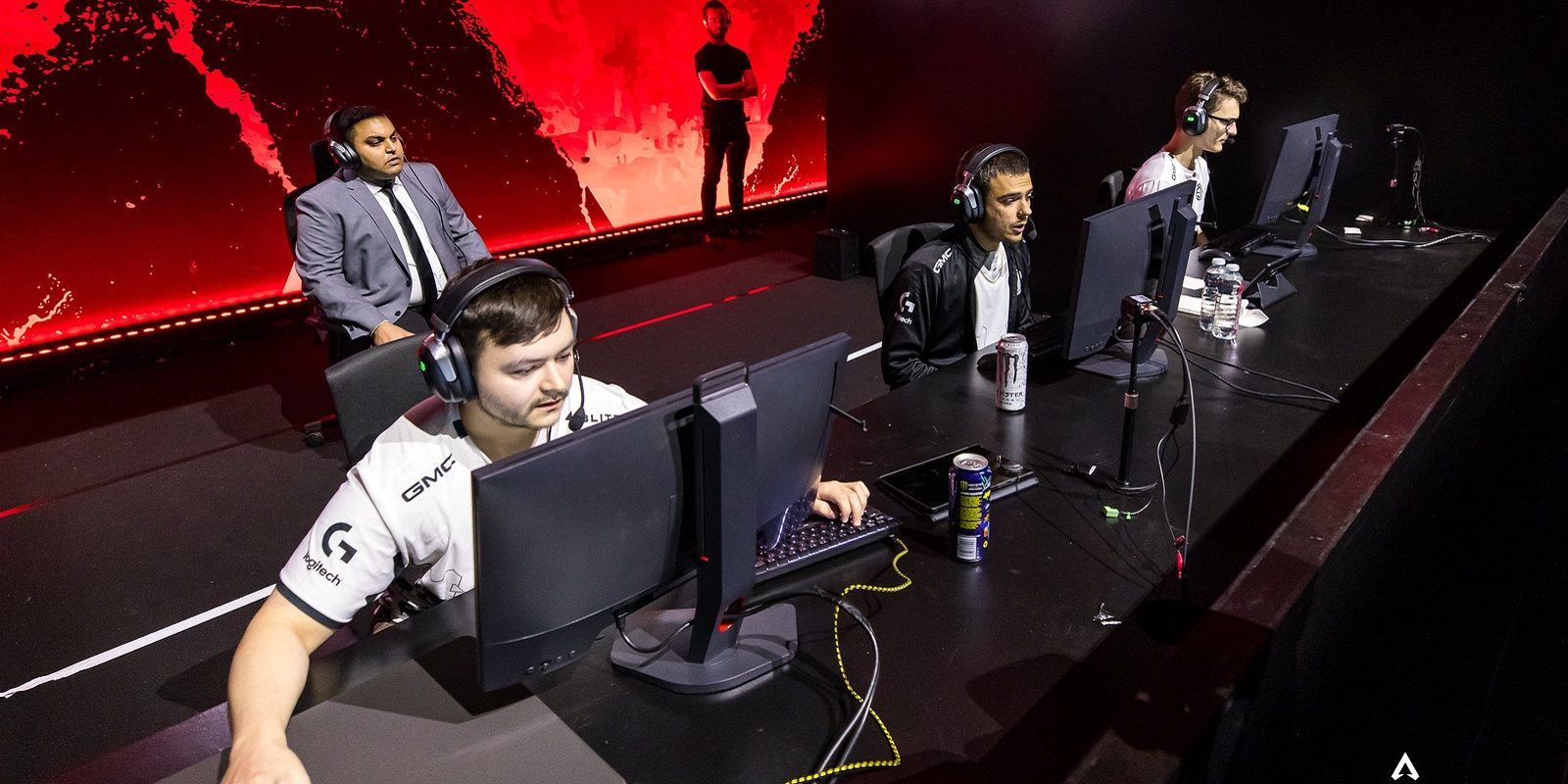The ALGS Championship 2023 Feels “Like A Circus”, Says TSM Raven

“The second set of Day One really did not feel like we were competing like a $2 million tournament,” says TSM coach Raven. “There were a lot of weird things going on. We were getting contested by K1CK, we were getting Charge Rifled across the map during our contest, everything just felt like a circus.”
Despite a strong first day, Raven laments the chaotic lobbies in the early stages of the ALGS Championship, and believes this led to a lack of intensity from TSM. The tournament favourites dropped down the leaderboards on the second day of competition to sixth. While many teams would be happy to comfortably secure a place in the Winner’s Bracket, it’s not where TSM is expected to be. Their place is fighting at the very top, but Raven isn’t worried about getting back on form.
Related: JLingz' Jmw Wanted To Right The Wrongs Of Last Year’s ALGS Championship
“It's really important for [the players] to know that we didn't [****] up because we were getting outplayed,” he says. “We didn't [****] up because of our strategy or our approach, we just lacked intensity and that's very easy to fix.”
Photo courtesy of EA and Joe BradyTSM usually has no problems locking in when it comes to the knockout stages, but rivals DarkZero are already running through the groups as if they’re pub lic lobbies. You have to wonder if TSM’s lack of momentum will hurt in the biggest stages, but Raven notes that the Championship lobbies aren’t as even as you’d imagine.
“Champs actually has more skill disparity than the two [Playoffs] even though it's a bigger tournament,” he says, pointing out that some teams qualified from the first Playoffs LAN, based largely on 2022 form, and Last Chance Qualifier (LCQ) tournaments add another random element to proceedings. “Although the concept of an LCQ is pretty cool, it doesn't reflect consistency.”
"[Catalyst is] one of the best designed characters in any video game ever.” - Raven
In an ideal world, Raven would have the ALGS host a preliminary worldwide tournament to decide the last ten spots for the Championship. Instead of giving regions more or fewer LAN spots based on form, it would be a free-for-all tournament to qualify for those who narrowly missed out. He acknowledges that this is likely a pipedream, however, and an incredibly costly alternative to the current system.
One thing he’d like to stay the same, though, is the controversial pauses that have interrupted countless matches this week.
“If someone crashes, just for competitive integrity’s sake, the game should be paused,” he says. “And I also agree with the rule that people shouldn't be talking during pauses too.”
The latter point was particularly contentious in the first two days of action, as the main broadcast showed multiple teams, including Alliance and DarkZero, formulating gameplans during pauses, clearly talking with one another. EA put out a clarification of the pause rules on Thursday, and Raven feels like this could have been better communicated to teams originally.
“It's definitely gonna get enforced [now],” Raven tells me, intimating that the rules reiteration has been showed to players too. “Part of it is how it was communicated to us – just to be clear, people were told that they couldn't talk but some players or teams also just don't read Discord or [player] handbooks. Maybe there was a better way for everyone to be told that, but also some of it is on the teams. We knew that.”
He has one caveat for the system though, suggesting that pauses “shouldn’t be used from zone five and on because it throws off a lot.” This happened once in the opening days, as DarkZero was engaged in a key fight that decided the victor of the round. The pause changed things significantly, giving all involved teams a chance to regroup and think about their plans going forward. This also seemed in breach of the ALGS’ rule that pauses would occur after a minimum of two seconds’ ceasefire, but the teething issues have largely been solved since.
Photo from TSMOne major problem, however, remains. The Catalyst meta is often discussed in competitive Apex circles, and the wall-creating character was picked by over 70 percent of teams in the ALGS Championship 2023 group stages. 42 percent of teams went for the exact same team composition of Bangalore, Catalyst, and Horizon. Players and fans alike discuss the Catalyst nerfs they’d like to see, from a longer cooldown on her Ultimate, to a shorter distance of throwing her Tactical, to making her Passive more, well, passive. But Raven has a soft spot for the character, seeing as he almost single-handedly created the meta and alerted players to her abilities in competitive play.
“She’s one of the best designed characters in any video game ever,” he says. “The problem is a lot of the Legends in this game are pretty weak and terrain control in general is just a very strong thing. Being able to deny space and control terrain in a battle royale is very important, but it also scales really well as the game goes on. As the map gets smaller, terrain control gets even stronger because it controls more of the zone, so inherently those types of abilities are strong.”
"I've been getting more into Magic: the Gathering" - Raven
He acknowledges that she doesn’t have many counters – Horizon and Fuse being the only two, and even then, only in specific situations – but doesn’t see that as a major problem for the competitive scene. Instead, he turns the tables on Bangalore.
“Bang is more problematic,” he says. “She’s too annoying, has too many smokes, and too much time on smokes. It’s really boring to watch.”
It doesn’t help that the Digital Threat was in the crafting rotation for some matches this week, as its ability to highlight opponents through visual clutter like Bangalore smoke gives teams running the Legend a major advantage.
To finish our quickfire interview slot, I remind Raven of the inspirations he mentioned the last time we spoke, including games like Guild Wars and niche Korean MMO MapleStory. What’s he been playing recently and has it impacted his approach to Apex?
“I’ve been getting more into Magic: the Gathering,” he tells me. As well as the parallels between colours in the card game and team synergy in the esport, Raven explains that scaling and pacing have similarities in the two games; what is strong in the early, middle, and late stages of a match. But there’s more, and it turns out that Magic is responsible for the Catalyst/Fuse composition TSM has been running.
The entire TSM team poses for a photo after the ALGS LAN. Photo courtesy of TSM Dunc on Twitter“The strategic approach that I've been applying to TSM since I joined has pretty much been based on this one article about inevitability from Magic,” he says, before briefly summarising the theory. “The most important concept of Magic is this concept of inevitability: inevitably, if everything stays the same, who wins?
“That lends itself to more zone oriented gameplay. So we just have to make sure that the game state is the same, right? And we could do that with loot and characters like Catalyst and Fuse that can warn teams away.”
Everything Raven says informs his holistic view of esports coaching, and explains why he forged a path in competitive Apex Legends, practically creating a role for himself and excelling at it so well he was immediately snapped up by one of the best teams in the world. Raven hasn’t just changed the game for TSM, he’s changed the game for the entirety of Apex Legends esports.
Next: DarkZero: “Anything Outside Of Top Two Would Be Catastrophic” At ALGS Championship













